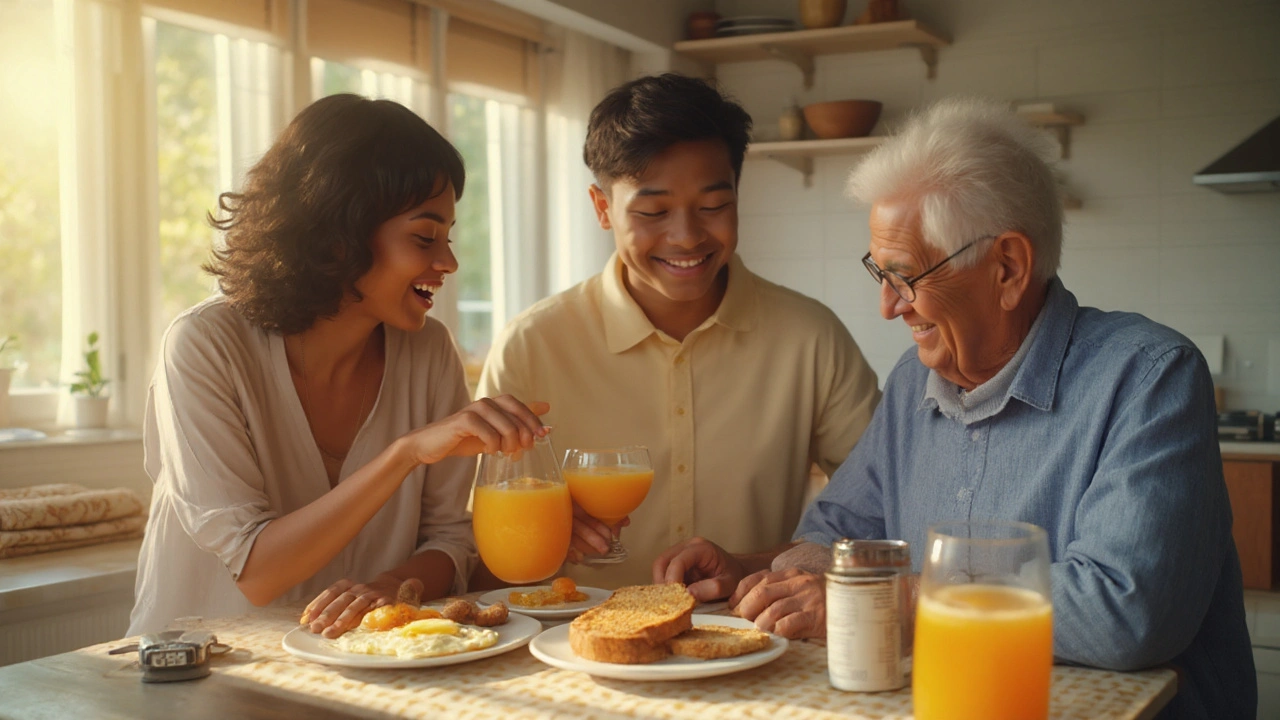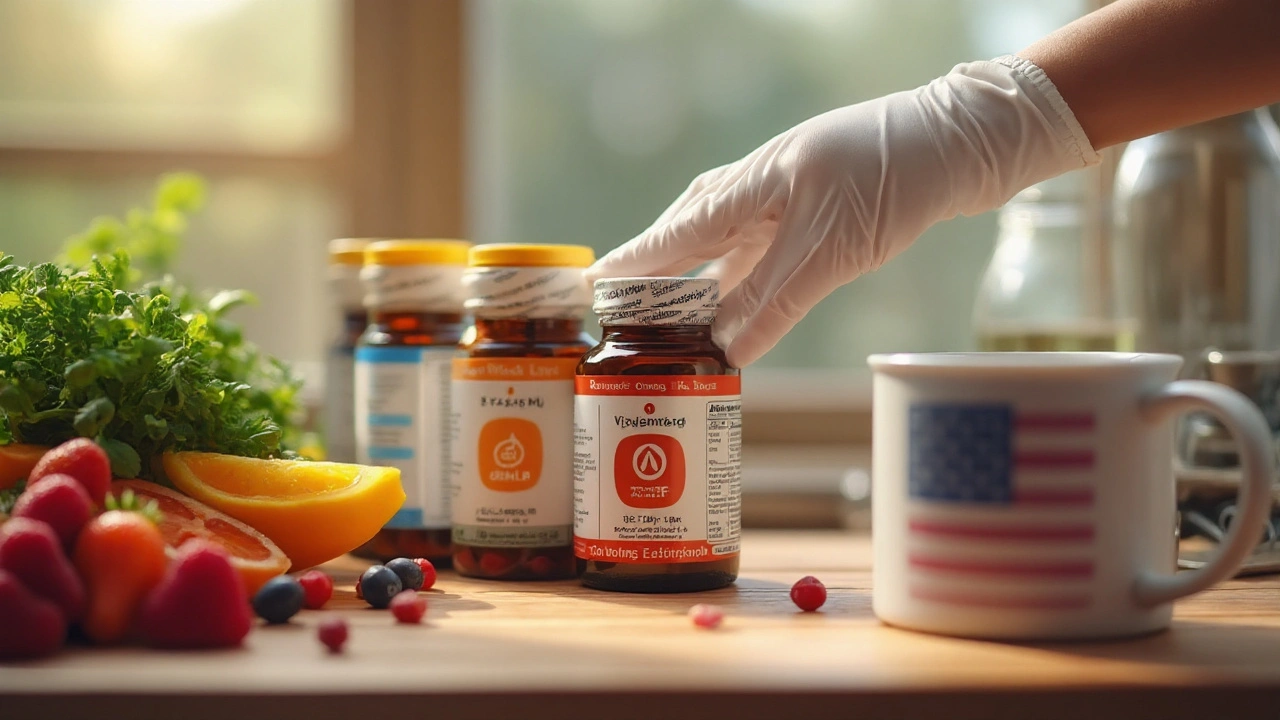Vitamin Timing Quiz
Vitamins are organic compounds that the body needs in small amounts to support metabolism, immunity, and growth, characterized by specific biochemical roles such as co‑enzyme functions. Taking them the wrong way can blunt their benefits or, in rare cases, cause toxicity. Below is a step‑by‑step guide based on advice from a qualified pharmacist, who sees the daily challenges people face when juggling multiple supplements.
Why the Type of Vitamin Matters
Vitamins fall into two broad families:
- Fat‑soluble vitamins (A, D, E, K) dissolve in dietary fat and are stored in liver and adipose tissue.
- Water‑soluble vitamins (C and the B‑complex) dissolve in water, circulate freely, and excess is excreted in urine.
This split drives everything else-when you should swallow the pill, what foods to pair with, and how much leeway you have with dosing.
Timing: When to Swallow Your Pill
Pharmacists stress that timing is the single most overlooked factor for effective vitamin use. Here’s the rule‑of‑thumb:
- Fat‑soluble vitamins: Take with a meal that contains at least 5g of fat (a teaspoon of olive oil, a handful of nuts, or a dairy product). The fat creates micelles that ferry the vitamin across the intestinal wall.
- Water‑soluble vitamins: Most work best on an empty stomach, about 30minutes before a meal or two hours after. The low‑pH environment of the fasted stomach prevents premature breakdown.
- Multivitamins that mix both types: Split the dose-half with breakfast (fat present) and half with a mid‑morning snack (fasted) if the formula is balanced.
Skipping this timing cue can cut absorption by up to 50% for vitaminD, according to a 2022 clinical trial at the University of Sydney.
Food Interactions: The Good, the Bad, and the Neutral
What you eat with your supplement can either boost or block its action. Below are the most common pairings:
- Calcium and iron: High calcium intake (dairy, fortified tofu) competes for the same transport channels, reducing iron absorption by up to 30%.
- Vitamin C and iron: VitaminC acts as a reducer, turning non‑heme iron into a form the gut absorbs more readily-useful for vegetarians.
- Vitamin B12 and proton pump inhibitors (PPIs): PPIs raise stomach pH, making B12 less bioavailable. If you’re on a PPI, consider a sublingual B12 or a timed-release formulation.
- Fatty meals and vitamin K: Since vitaminK relies on chylomicrons, a moderate‑fat meal helps, but a greasy fast‑food binge can slow gastric emptying and delay peak levels.
When in doubt, keep a simple journal for a week: note the vitamin, the meal, and any noticeable change in energy or side effects. Patterns emerge quickly.

Dosage and Safety: Knowing Your Limits
Just because a vitamin is “natural” doesn’t mean more is better. Toxicity thresholds differ:
| Attribute | Fat‑Soluble Vitamins | Water‑Soluble Vitamins |
|---|---|---|
| Storage Site | Liver & adipose tissue | Blood plasma & urine excretion |
| Risk of Overdose | Higher (e.g., hypervitaminosis A at >10000IU/day) | Low (excess flushed in urine) |
| Typical Timing | With fat‑containing meal | Empty stomach or between meals |
| Examples | Vitamin A, D, E, K | Vitamin C, B1, B6, B12, folate |
For most adults, the Recommended Dietary Allowance (RDA) stays well below the Upper Level (UL). Exceeding UL for vitaminD (>4000IU/day) can lead to hypercalcemia, while vitaminC toxicity is rare even at 2g/day because the kidneys dump the surplus.
Practical Tips Straight From the Pharmacy Counter
Here’s a condensed checklist a pharmacist would hand you after a quick consult:
- Read the label: look for “with food” or “on an empty stomach”.
- Pair fat‑soluble vitamins with a source of healthy fat (avocado, nuts, eggs).
- Take water‑soluble vitamins at least 30min before breakfast or 2hr after meals.
- Avoid taking calcium and iron together; space them 2hr apart.
- If you’re on medication (e.g., statins, anticoagulants), check for interactions-vitaminK can counteract warfarin.
- Store tablets in a cool, dry place; humidity degrades especially B‑complex vitamins.
- Use a weekly pill organizer to keep track of timing and avoid accidental double‑dosing.
These steps cost you a few extra minutes a day but safeguard the investment you make in your health.
Common Mistakes and How to Fix Them
Even seasoned supplement users slip up. Spot the red flags and correct them on the fly:
- Rushing a multivitamin with coffee. Caffeine can increase gastric acidity, which may degrade vitaminC. Switch to water or a light breakfast.
- Skipping the fat cue for vitaminD. Unlike water‑soluble vitamins, vitaminD needs dietary fat. Add a spoonful of Greek yogurt or a half‑avocado.
- Taking high‑dose B‑complex at night. Some B‑vitamins (especially B6) can be mildly stimulating, leading to restless sleep. Move the dose to morning.
- Believing “natural” means risk‑free. Herbal additives in some vitamin blends (e.g., ginkgo, ginseng) can clash with blood thinners. Read the full ingredient list.
Related Concepts Worth Exploring
Understanding vitamins opens doors to a broader nutrition landscape. You might next dive into:
- Mineral supplementation - how magnesium, zinc, and selenium interact with vitamins.
- Bioavailability - the science of how much of a nutrient actually reaches the bloodstream.
- Pharmacokinetics of nutrients - absorption, distribution, metabolism, and excretion.
- Personalized nutrition - using genetic tests to tailor vitamin doses.
Each of these topics builds on the foundation laid here, helping you move from generic advice to a truly customized health plan.

Frequently Asked Questions
Do I need to take my vitamins with food?
It depends on the vitamin. Fat‑soluble vitamins (A, D, E, K) should be taken with a meal that contains some fat. Water‑soluble vitamins (C, B‑complex) are best absorbed on an empty stomach, about 30minutes before a meal or 2hours after.
Can I take multiple supplements at the same time?
You can, but watch for interactions. For example, calcium can inhibit iron absorption, and vitaminC can boost it. Space conflicting nutrients at least two hours apart, or use a timed-release formula.
Is it safe to exceed the recommended dose of a vitamin?
Exceeding the Upper Level for fat‑soluble vitamins can cause toxicity (e.g., hypervitaminosisA, vitaminD‑induced hypercalcemia). Water‑soluble vitamins are generally excreted, but very high doses of vitaminC can cause gastrointestinal upset. Stick to the RDA unless a health professional advises otherwise.
How does my medication affect vitamin absorption?
Some drugs alter stomach pH (e.g., proton‑pump inhibitors) which can reduce B12 absorption. Anticoagulants like warfarin interact with vitaminK, requiring careful monitoring. Always tell your pharmacist about all meds and supplements.
What’s the best way to store vitamins?
Store them in a cool, dry place away from direct sunlight. Heat and humidity can degrade potency, especially for B‑complex vitamins. A kitchen cabinet or bedroom drawer works fine, but avoid the bathroom.






